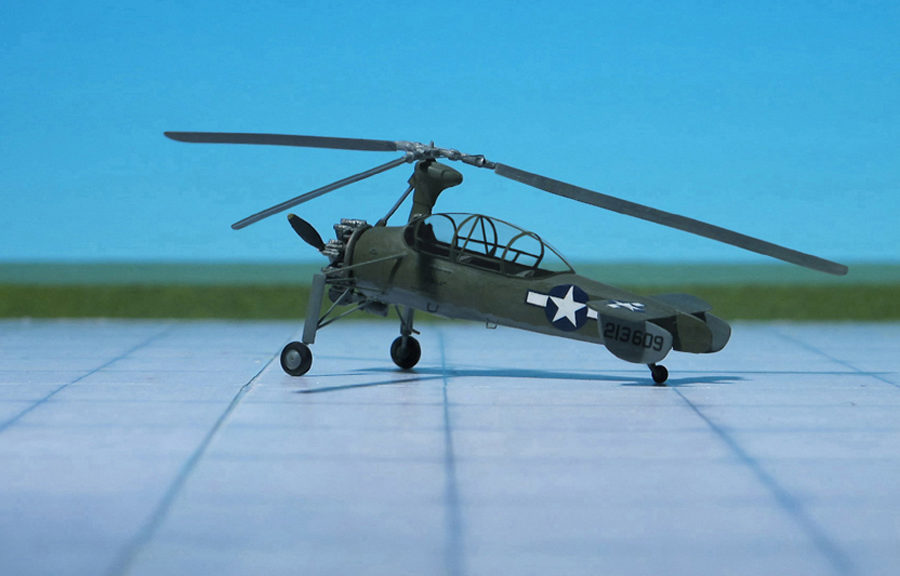TYPE: Autogyro, reconnaissance, observation
ACCOMMODATION: Crew of two
POWER PLANT: Jacob R-915-3 radial engine, rated at 300 hp
PERFORMANCE: 110 mph
COMMENT: The Kellett YO-60 was a military derivative of the civil Kellet KD-1 autogyro built by the Kellett Autogiro Company by order of the United States Army in the late 1930. It had the distinction of being the first practical rotary-wing aircraft used by the United States Army and inaugurated the first scheduled air-mail service using a rotary-wing aircraft.
Using the experience gained in building Cierva autogyros under license the Kellett Autogiro Company developed the KD-1 which was similar to the contemporary Cierva C.30. It had two open cockpits, a fixed tailwheel landing gear and was powered by a 225 hp Jacobs L-4 radial engine. After testing of the prototype a commercial variant designated the Kellett KD-1A was put into production. The KD-1A had a three-bladed rotor with folding blades and a number of minor detail improvements. A KD-1B which was a KD-1A with an enclosed cockpit for the pilot was operated by Eastern Airlines and inaugurated the first scheduled rotary-wing air-mail service on July 1939.
In 1935 the United States Army bought a KD-1 for evaluation and designated it Kellett YG-1, a second aircraft followed which had additional radio equipment and was designated the Kellett YG-1A. These two aircraft were followed by a batch of seven designated Kellett YG-1B.
In 1942 seven more aircraft were bought by the US Army Air Force for use in the observation role as the Kellet XO-60. During initial test phase several improvements were incorporated compared to the KD-1. A new style clutch had discs and used a planetary reduction gear system at the engine with a larger drive shaft running directly from the power takeoff on the engine to the rotor head and the pilot was put in the front seat and added a transparent plastic cover over both cockpits and a large transparent plastic panel in the belly beneath the pilot’s feet. The observer’s seat could swivel so he could ride backwards and work at a small table behind the rear seat. When the observer was not in place, ballast had to be carried in the rear cockpit. Furthermore, the power plant was changed to a Jacobs R-915-3, seven cylinder, air-cooled, radial engine providing 330hp through a Hamilton-Standard constant speed propeller and the engine mount was removable at the firewall. In this way a quick change power plant package could be stocked. The fuselage structure was similar to the earlier KD-1/YG-1. The fairing was different with flatter sides giving the observer better downward vision out the side windows. The enclosure over the two cockpits hinged open and slid to the right to permit entrance and exit from the cockpits on the left.
The model was soon changed from Kellett XO-60 to YO-60 and seven were built. Only six were delivered, one was damaged in a run-up accident and was not repaired.
One YG-1B was modified with a constant-speed rotor and was re-designated the Kellett YG-1C, it was later re-engined with the more powerful R-915 and re-designated again as the Kellett XR-2. The XR-2 was destroyed by rotor ground resonance problems and the evaluation was continued with another modified YG-1B designated the Kellett XR-3. In total app. 24 Kellett autogyros were built for the US Army Air Force.
One Kellet KD-1A been imported to Japan in 1939 and was prototype for the Kayaba Ka-1 and Ka-2 autogyro (Ref. 24).












